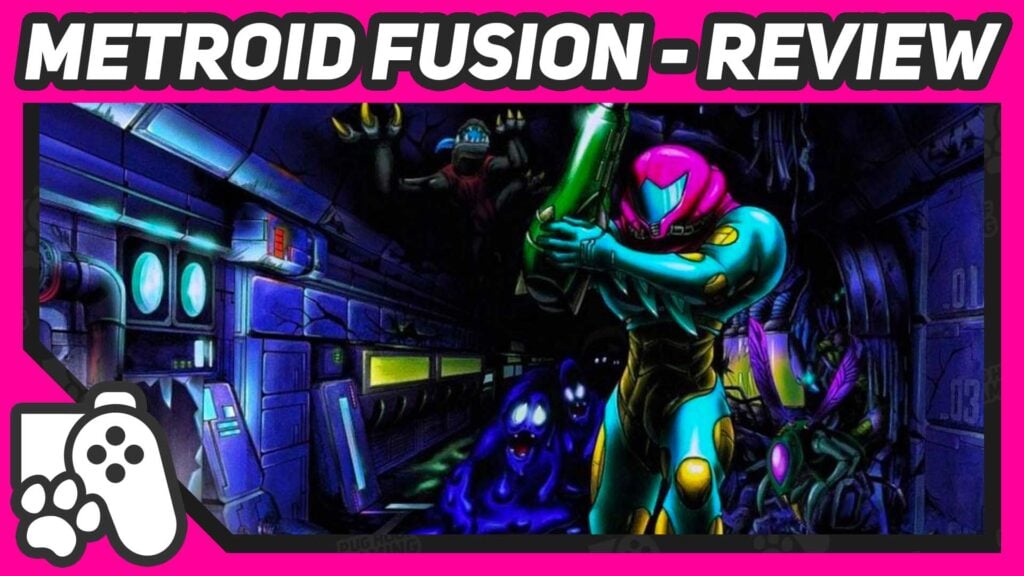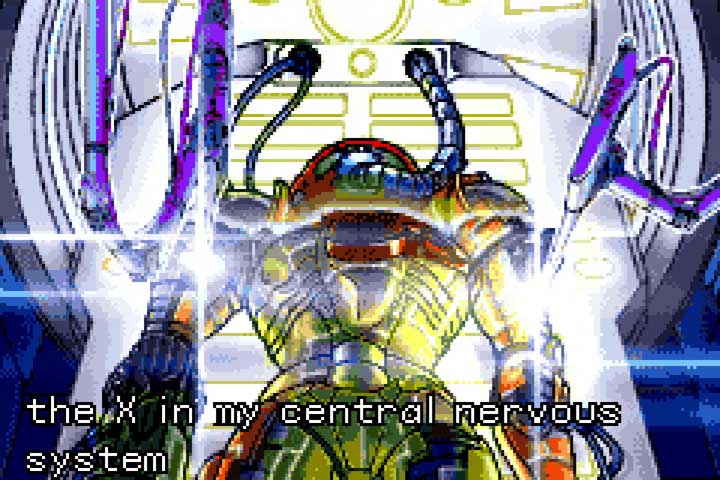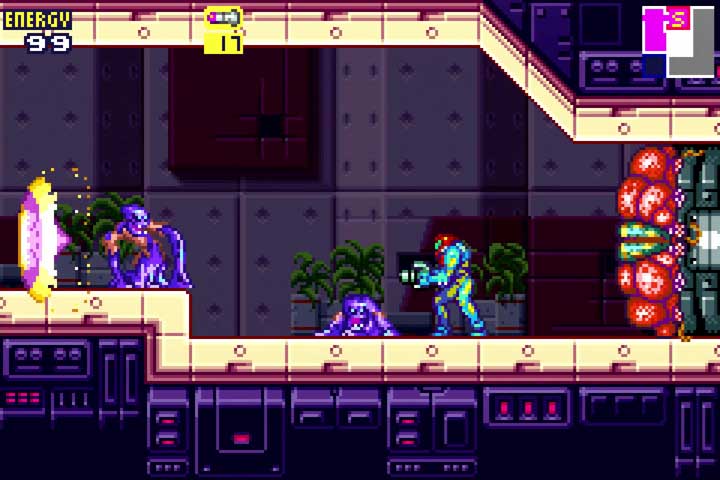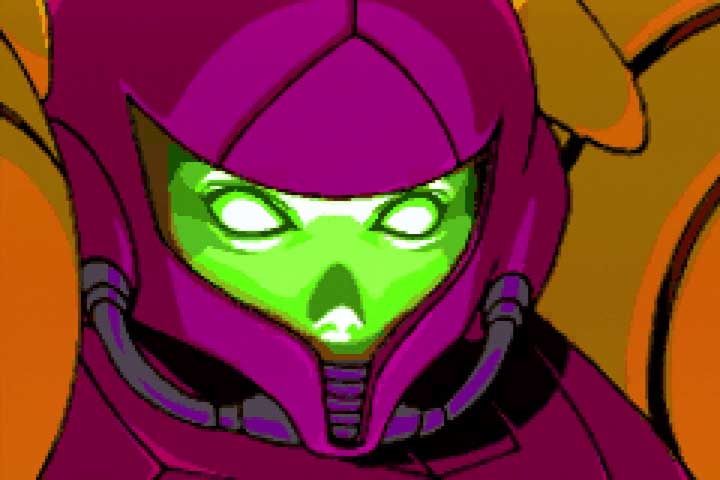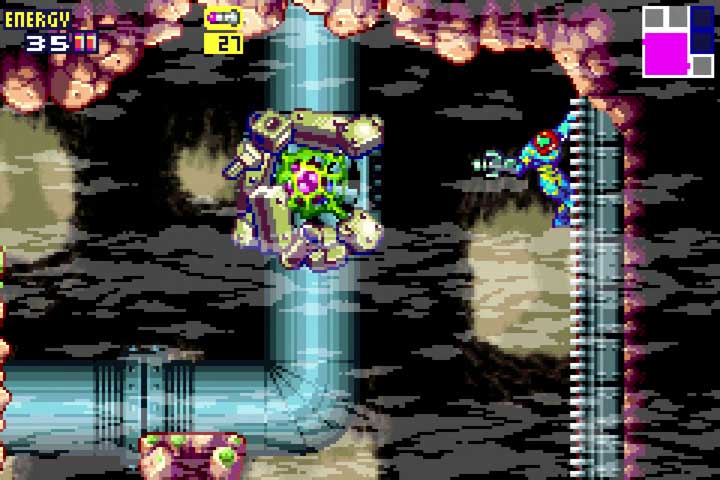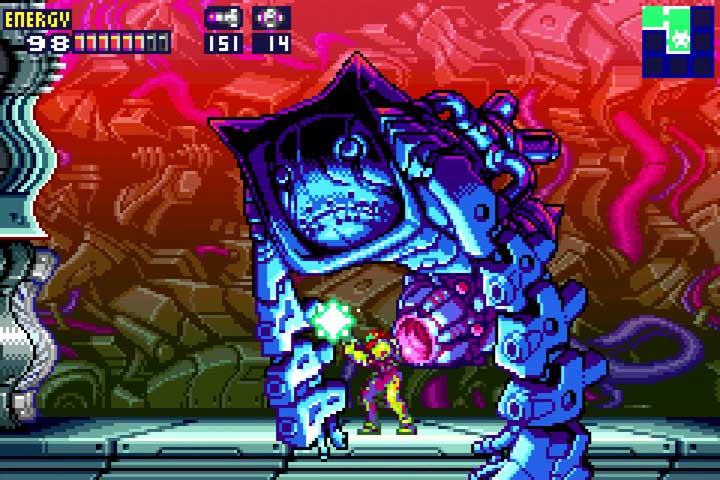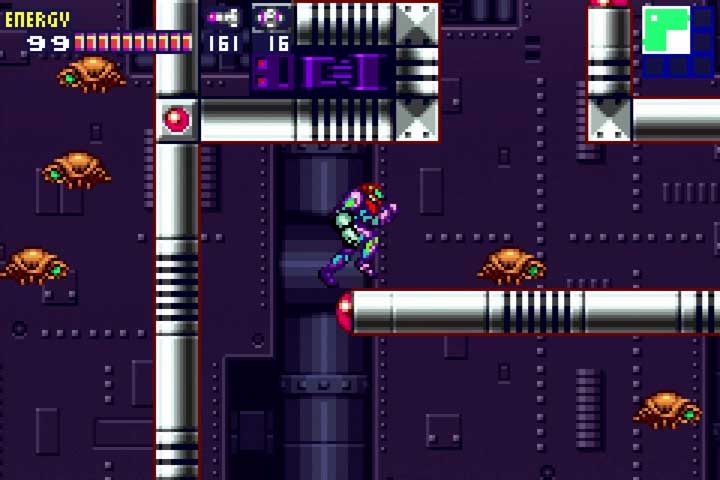After the release of Super Metroid in 1994, fans of the series couldn’t really be any happier. If only they knew the years of pain they’d be suffering soon after, as while Super Mario and The Legend of Zelda made their own critically-acclaimed jumps to the 3D space via the brand new Nintendo 64 console; Samus was cruelly denied her own adventure on the system. Put simply, Nintendo didn’t know what to do with Metroid on N64 – They couldn’t figure out how to make the series work in 3D and match the quality of Super Metroid, and rather than make a 2D game for the Nintendo 64 – They just didn’t bother.
But, this story has a happy ending. In 2001, fans would be greeted with the announcement of not just one new Metroid game – But two, with one of them being a direct sequel to Super Metroid and coming to Nintendo’s Game Boy Advance handheld. This initial trailer is definitely a lot different from the game we would eventually receive in 2002, but as the pre-title screen opening sequence clearly states, Metroid Fusion is indeed Metroid IV.
Honestly, Super Metroid feels like an unbelievably hard act to follow, and you can understand Nintendo’s hesitance. But, Metroid Fusion absolutely puts its best foot forward with its introductory sequences, with its gorgeous cutscenes giving a clear indication that the series is about to take a more narrative-driven approach. Put simply, Samus finds herself returning to SR388, the planet from Metroid II where our hero eliminated the entire Metroid race. Unfortunately, her previous actions have allowed a new apex predator to rise to the top of the food chain – The X parasite
Metroid Fusion GBA Review – Intro
Whilst returning to the planet to assist a research crew, she is infected by this deadly virus, infecting her nervous system, crashing her ship and corrupting the biological elements of her Power Suit. After life-saving surgery, and the help of a vaccine made from the Metroid hatchling she previously encountered on SR388, Samus recovers, her suit drastically changing in appearance due to the medical interventions she received, and goes back to the research station where the X-infected creatures are being observed. Alas, all Hell breaks loose, and our hero must once again save the day – Not from Metroids. Not from Space Pirates, but someone altogether more frightening – A parasite that can mimic its host.
It’s a helluva exposition dump at the beginning, and from here you see how Fusion differs from its predecessor. While Super Metroid prefers to show you things and let you figure them out, Fusion wants to tell you all about them and leave nothing to chance. From text-heavy monologues during elevator rides, to conversations between Samus and her new ship’s computer, this is the series going out of its way to make itself loud and clear for Metroid players old and new. However, something that will bring mixed feelings for many, is that the same approach also applies to how this game plays. Set on a BSL space station orbiting SR388, there is a central hub area which can be used to travel to six different sectors, with each area starting with a Save Station for saving the game, a Recharge Station for restoring health and ammunition, and a Navigation Panel that serves a dual purpose of providing the player with information and exposition, as well as telling them where to go next. Unfortunately, in most cases, it is mandatory to be told this information, and in many cases the player is unable to proceed until they’ve interacted with the next Navigation Panel, meaning that the player’s hand is more or less held for most of the game – There is no option not to be told this information. Personally, I had no issue with the game giving me a rough idea of where to go, and a chunky bit of narrative on the side, but I can imagine many Metroid fans would prefer to explore at their leisure, finding their way around as they would have traditionally. It’s a drastic change for the series, sure, but ultimately I feel it’s one that serves this game well – After all, Samus can’t be completely alone for every mission.
Fusion might move away from Metroid’s exploration-based roots; but it instead offers something new – Terror. Previous games pit Samus against harsh environments, flora and fauna, but this time around she’s facing something much more dangerous – SA-X: A mirror image of herself, created by an X parasite that infected her fully powered Power Suit, and is actively hunting Samus down. Early on, you’re given one piece of advice on how to deal with this menace: Run. It’s sound advice, as from the moment this creature makes its literally explosive entrance, it’s made pretty clear that this is something you don’t want to mess with. For much of the game, you are so woefully underpowered compared to this new antagonist, that any time you hear the eerie sound of echoing footsteps against the heart-like sound of a beating drum, you instinctively stay where you are until its gone, or get the hell out of there. If SA-X catches you, it’s coming after you. Eventually, you might have the weaponry to at least slow it down, but once it’s got a lock on you, hesitance to retreat only ends in a horrific death.
Knowing that this powerful, relentless being is lurking somewhere, brings something new to Metroid. Not that the SA-X is all you need to worry about, as there are a whole heap of new enemies to blast. A clever mechanic is how all of the enemies are X parasites in infected entities, and once the host is destroyed, due to Samus’s previously infected form, she can absorb these floating parasites to replenish health and ammo. However, if left alone, these hostless parasites will flock to the nearest host or even other X parasites to create deadlier mutations of existing enemies. It’s a pretty clever way to keep you on your toes, and it definitely gives Metroid Fusion a more sci-fi horror feel than any other game in the series. That schlocky B-movie feel is reinforced by some truly grotesque enemy designs – Some of these enemies look like reanimated corpses whose cells are barely holding together, while Fusion also features some of the most unusual boss designs in the entire series.
The setting of the BSL Research Station is also a welcome change of scenery but given that this outpost is also home to six individual sectors each with a different sort of environment, you can expect the various sorts of environments you would normally see on SR388 or Zebes. On your 2D action game bingo card, you can tick off the leafy rainforest area, water-filled tunnels, icy cold area and more. Because the sectors are so different and disjointed, Fusion’s setting doesn’t feel quite as memorable as SR388 or Zebes; but that doesn’t mean they’re not interesting to look at. These environments are clearly designed to make the most of the GBA’s small, unlit screen, with bold colours and exaggerated details – If you look carefully, you can even spot a random Gamecube within the junk accumulated in the atmosphere stabilisers you need to purify, early on.
Naturally, Samus will pick up a variety of upgrades that help her explore more of these synthetic environments. From the start of the game, she can now cling onto the edge of platforms that would have been slightly out of reach previously, and can still perform the wall jump manoeuvre from Super Metroid. Plus, the Shinespark ability also returns, allowing Samus to charge up a run and use it to propel herself in a direction. Side bit of trivia, Metroid Fusion is in fact where it got its name, via a really tricky to find easter egg that involves a ridiculously accurate amount of Shinesparking to bypass the Diffusion missile upgrade, triggering a series of unusual secret messages. Alas, I spent hours upon hours trying to capture it for you, but I just couldn’t nail this super-hard sequence break.
While Samus does indeed pick up all sorts of beams, missiles and suits, sadly there isn’t the option to disable particular skills, that was used in Super Metroid to make different combinations of weapons. However, Fusion does do its best to use the limited 4-button controls of the Game Boy Advance, to allow the player to do almost as much as was possible in the previous Super Nintendo game. As is the way in this game, you are told where to fin most of these upgrades as they’re usually explicit mission objectives, but there are a few surprise upgrades in the mix for you to find. In fact, while much can be said for the amount of information that is given to you, there are still quite a few surprises that come your way – Something I don’t think many people talk about. I won’t spoil too many things here, but as in Super Metroid, sometimes you can’t always rely on a usually safe area being…well…safe.
Considering that the GBA’s sound capabilities aren’t a patch on the Super Nintendo’s, the music in Metroid Fusion is pretty good. It’s very synthy of course and definitely goes along with the idea that they were going with a more sci-fi horror vibe here. Alongside the strange atmospheric soundscapes you might expect, there are some more uptempo tracks here as well, and you will absolutely learn to fear SA-X’s theme. The instrumentation is really unique, with lots of unusual sounds that you’d never expect to hear in a Nintendo game, plus there are a few returning tracks from previous Metroid games, just to give you a little bit of those nostalgia feels.
When you look at Metroid Fusion as a whole, you really get the feeling that a real effort was made to better Super Metroid in every way, and in most cases, I do think that it does. Everything in Fusion has been refined from its predecessor, and this is far from a shallow copy of one of the greatest games of all time. I imagine that if Fusion was less eager to hold your hand, I think it would be regarded as a classic alongside Super Metroid – But personally, I think it absolutely ranks alongside it. Fusion strips away from exploration and the feeling of getting lost, to deliver something very unique for a Nintendo game; and it works. From early trailers, Dread appears that it’s trying to build upon the themes and feel of Fusion, and it’ll be interesting to see if the same trick works again and whether the E.M.M.I. enemies are going to be as terrifying as the SA-X. Admittedly, I think it’s going to be tough to do.
Almost twenty years later, and Metroid Fusion seems to have only gotten better with age. This was the first Metroid title I played through properly, and while I think Super Metroid is just a little better and deserves its “classic” status; Fusion is still an incredibly good game and one that absolutely needs to be held aloft as one of the greats.
Technically, with this Metroid Fusion GBA review, the Road To Dread could end here, with Nintendo and MercurySteam’s brand new Switch title being a direct sequel to Fusion – But that’s not how we roll here, as I move on to Samus’ 3-Dimension debut in the massively bold Metroid Prime. See you soon for a full review of this Western take on the series.
